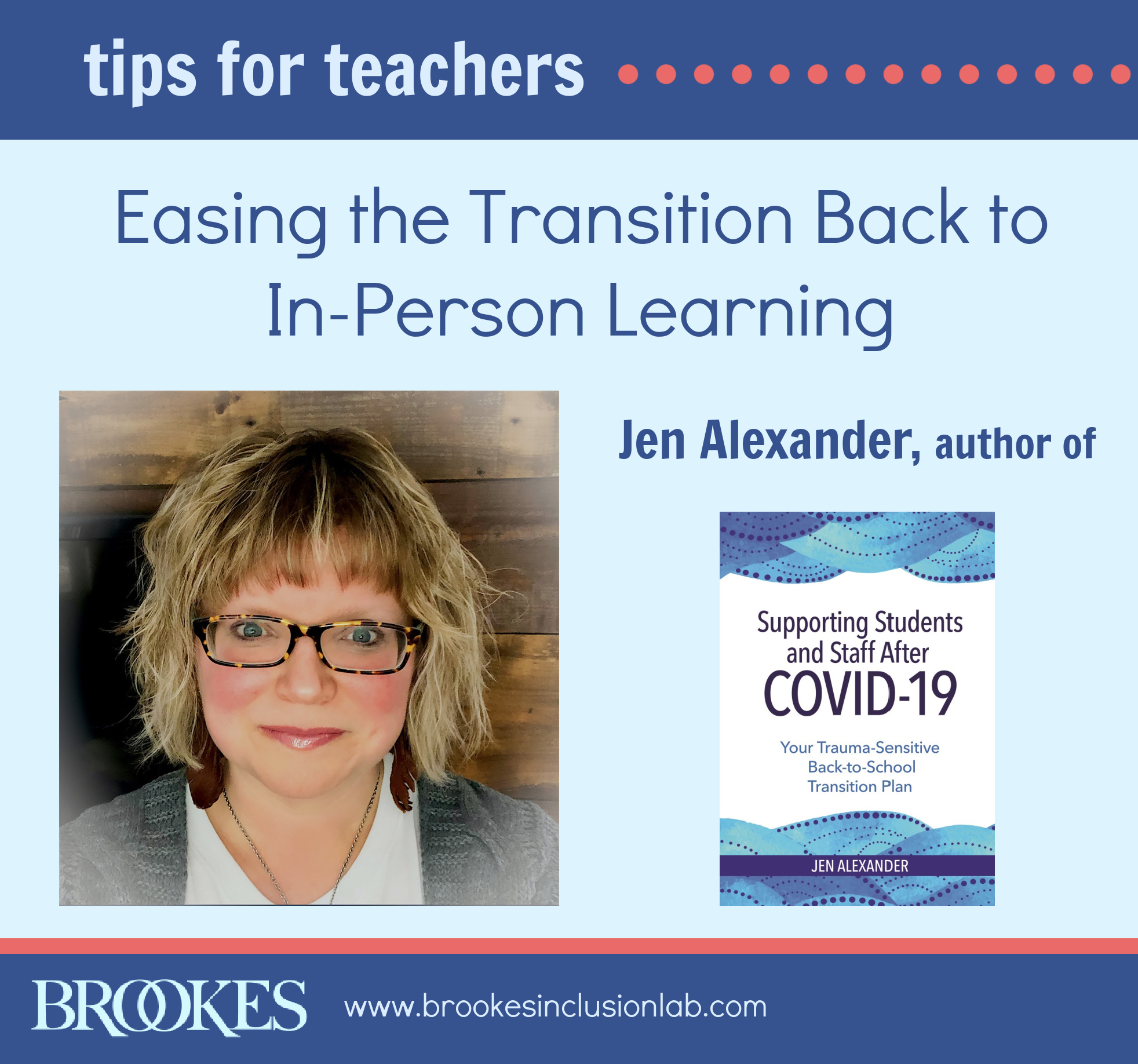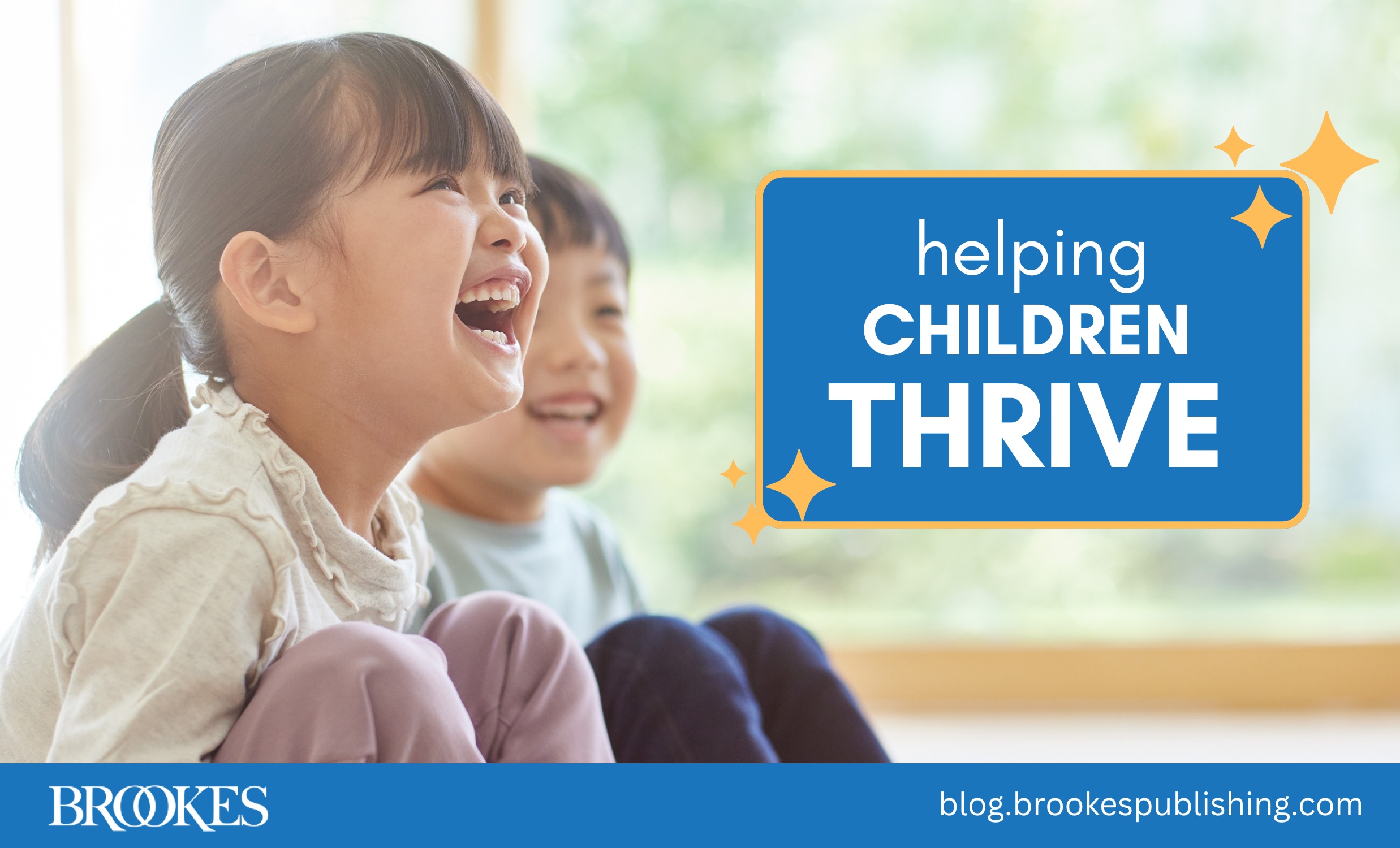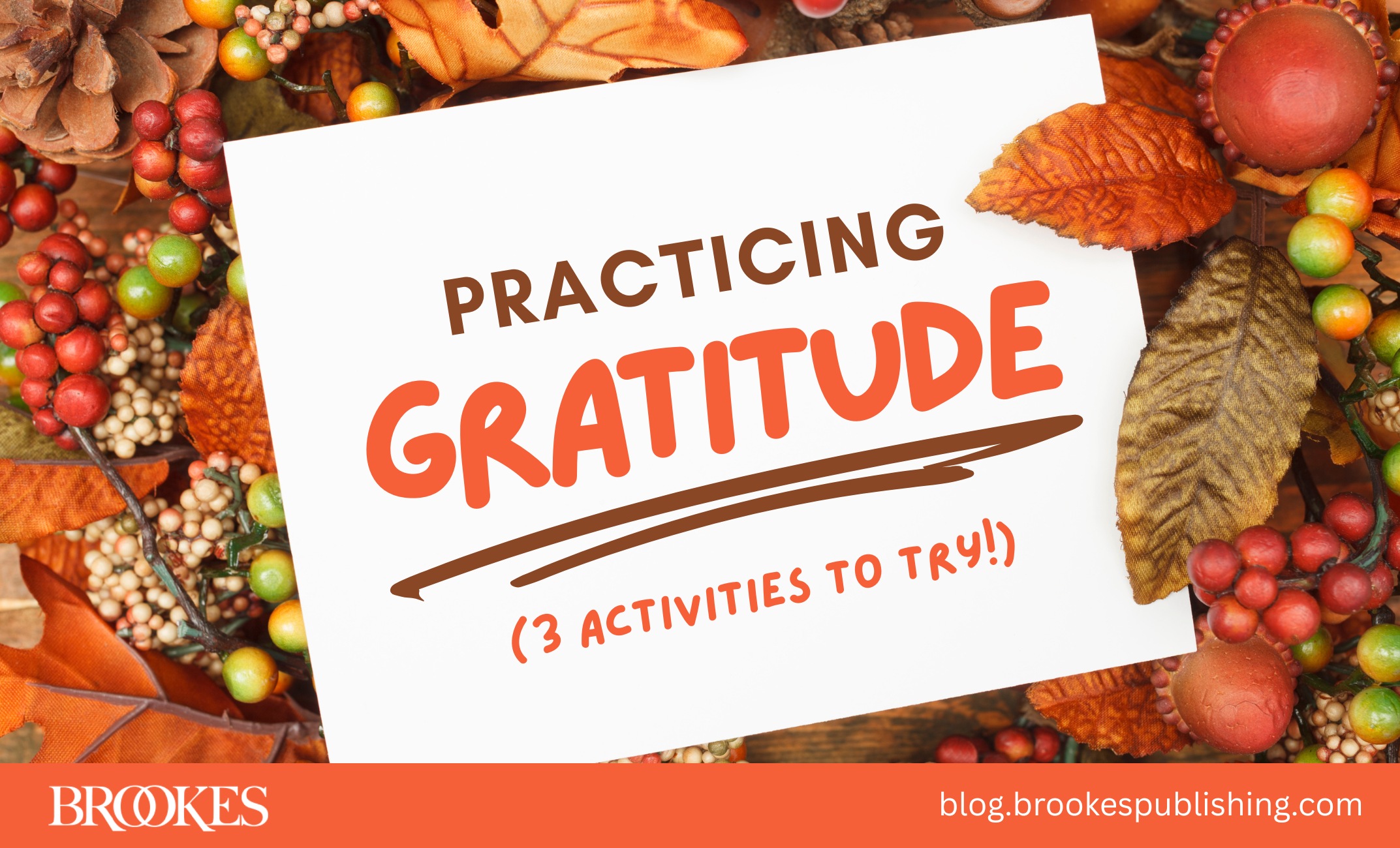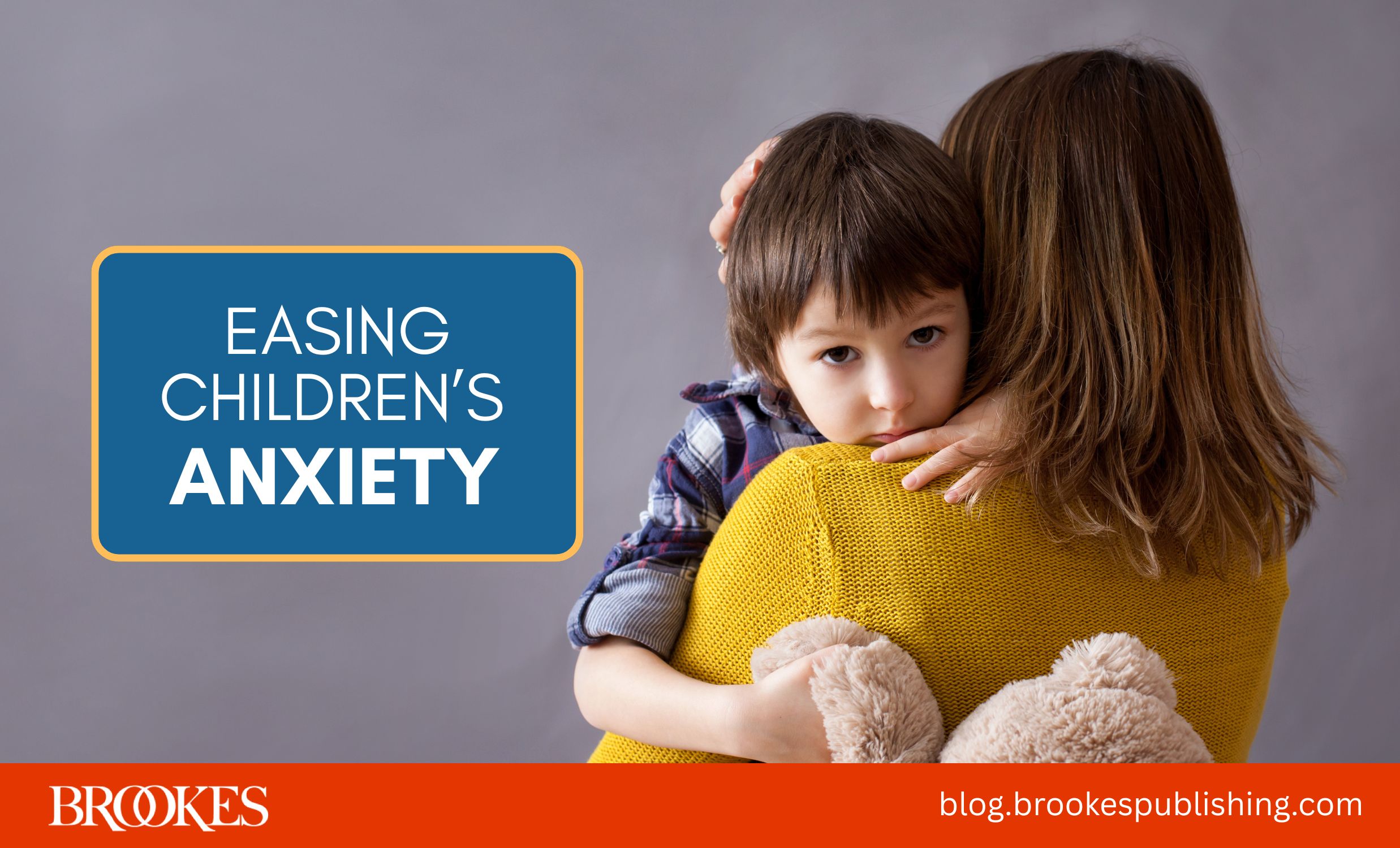Easing the Transition Back to In-Person Learning: 4 Tips from Trauma Expert Jen Alexander
March 30, 2021
This year, the transition from online learning back to face-to-face instruction may be both exciting and challenging. While many students and staff members will be eager to get back to in-person learning, the COVID-19 era has been stressful and scary for nearly everyone; many have experienced loss or trauma. As such, all members of your school community will need gentle care and practical strategies to manage stress responses and ease back into face-to-face classes.
How can you help everyone in your community make the transition back to in-person school as smooth as possible? Jen Alexander, author of the book Supporting Students and Staff After COVID-19, has some helpful tips for educators in today’s post. An experienced educator and trauma expert, “Ms. Jen” has been sharing great information throughout the pandemic. See the end of this post for a sampling of her other resources, and keep these four back-to-school fundamentals in mind as you navigate the transition:
- Slow down. Stress can cause a significant surge of energy in the body, which can feel like too much to manage. One important thing you can do is slow everything down—your speech, your movements, the pace of your instruction. Take time to help youth understand and practice routines and procedures that allow them to feel safe and be successful. This will help soothe and counteract stress responses as you establish a new rhythm together.
- Take time for community-building. Most people limited their social interactions to some degree during the spread of COVID-19, and the return to in-person learning and regular socialization will stir a variety of emotions in both students and adults. Some will feel excited to come back, while others will feel anxious, withdrawn, or even unsafe. Many people will need gentle reassurance to reengage successfully in social relationships, so take the time to build your classroom community. Learn about each other, set aside time to play and move, enjoy the gifts everyone brings to the classroom. Reserving this time to foster belonging will help your students be connected and get regulated—which will make teaching and learning easier.
- Encourage everyone to share their needs. How can you help everyone meet their needs in the school community, while recognizing that individuals will have different needs? Jen Alexander recommends using three phrases as helpful discovery tools: “I feel…,” “I need…,” and “I hope…” Invite both students and colleagues to finish those sentences to learn how to support one another, respect personal boundaries, and negotiate when needs vary. Ultimately, it’s feeling, dealing, and healing within a safe, supportive community that promotes recovery.
- Take care of yourself. Rest—you’re going to need it! The pandemic has caused widespread fear, illness, loss, grief, and trauma, and its effects will linger long after the immediate threat has faded. Always remember that your health and safety matter. (To learn how to weave self-care practices into your day by using habit stacking and sticky notes, read this post on Ms. Jen’s blog.)
To hear Ms. Jen take you through these key points herself, watch the video she recorded (and share it with the rest of your school team!):
MORE FROM MS. JEN
Read her Q&A on Trauma-Sensitive Back-to-School Plans
Watch her webinar on Noticing and Meeting Teacher Needs as Schools Reopen
Watch her webinar on Noticing and Meeting Children’s Needs as Schools Reopen




Write a Comment
Your email address will not be published. Required fields are marked *
Post a Comment